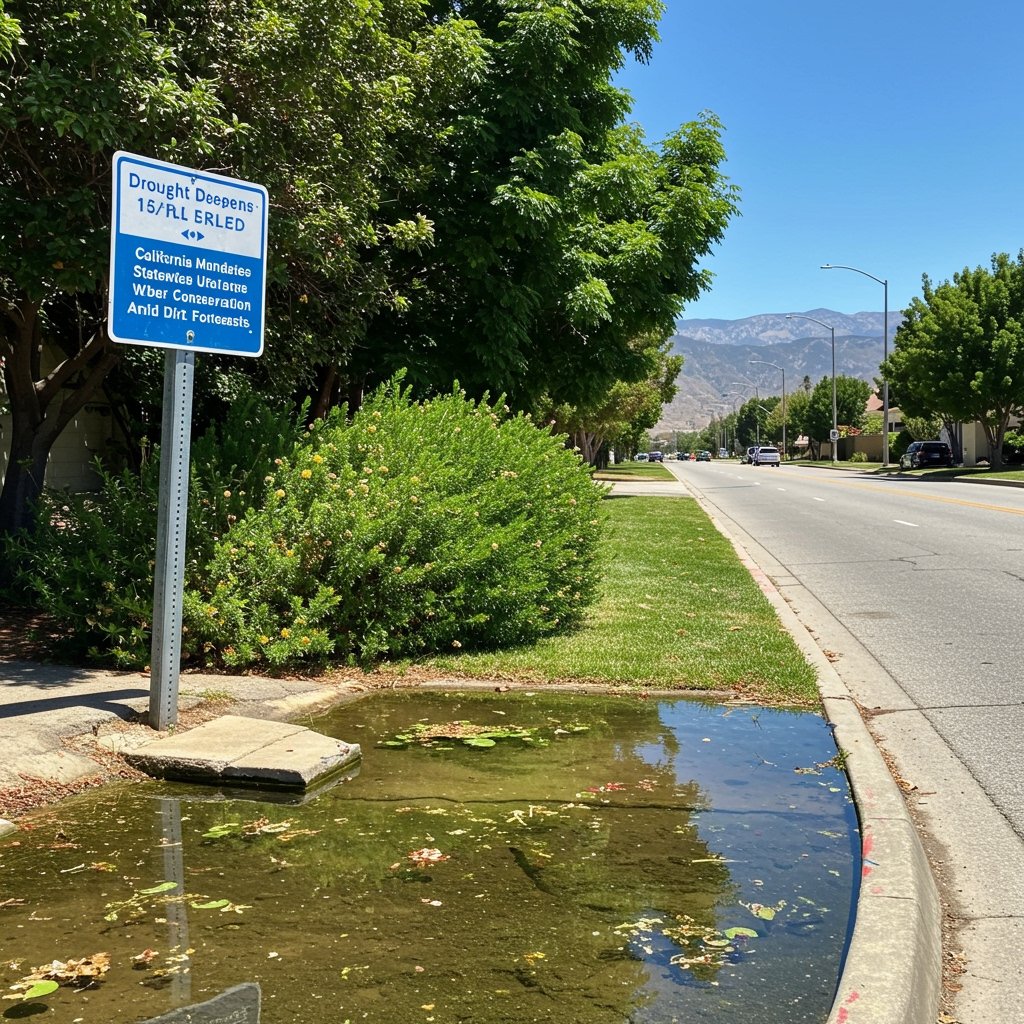California Mandates Statewide Water Conservation as Drought Forecast Worsens
SACRAMENTO, CA – In a significant move addressing the state’s escalating water crisis, the California State Water Resources Control Board today announced the implementation of mandatory emergency water conservation measures set to take effect statewide on April 15, 2025. Citing concerning new data from updated meteorological and hydrological forecasts, the Board’s decision mandates a 15% reduction in urban water use across California compared to 2020 levels. This decisive action underscores the severity of the current drought conditions and the urgent need to preserve the state’s finite water resources.
The State Water Board emphasized that the updated forecasts paint a grim picture, predicting prolonged periods of below-average precipitation, particularly impacting the key Northern California reservoirs that serve as the backbone of California’s water supply system. These reservoirs, including Shasta, Oroville, Trinity, and Folsom, are crucial for agricultural irrigation, urban supply, and environmental flows throughout the state.
Board Chair Joaquin Santos addressed the public and stakeholders regarding the necessity of these stringent measures. “The updated forecasts are unequivocal,” stated Chair Santos. “They indicate a significant likelihood of continued dry conditions, meaning our stored water supplies will need to stretch even further. There is an urgent need to conserve supplies amid the deepening drought. We cannot afford to wait; proactive conservation now is essential to safeguard against potentially devastating shortages in the future.” His statement highlighted the critical juncture the state faces, moving beyond voluntary conservation requests to enforceable mandates.
The new emergency regulations, formally adopted by the Board, place responsibility on the state’s urban water suppliers – the retail and wholesale agencies that provide water to homes and businesses – to collectively achieve the 15% reduction target relative to their 2020 water usage. While the mandate is statewide, the specific methods for achieving this reduction will be determined by individual water agencies based on local conditions and supply sources, under the oversight of the State Water Board.
Compliance with the mandatory restrictions is not optional. Chair Santos confirmed that penalties for non-compliance will commence on June 1, 2025. While the initial focus will be on ensuring water agencies meet their targets, the regulations provide the Board with the authority to issue orders and potentially fines against agencies that fail to implement necessary restrictions or achieve their conservation goals. This enforcement mechanism aims to ensure widespread participation and effectiveness of the conservation efforts.
The impact of these measures will be far-reaching, affecting millions of residents and businesses across the state. Urban water use encompasses everything from indoor household consumption (showers, toilets, laundry) to outdoor irrigation for landscaping, parks, and public spaces, as well as commercial and industrial uses. Achieving a 15% reduction will require a concerted effort from every sector of urban life. Water agencies are expected to implement a range of conservation practices, which could include limits on outdoor watering, prohibitions on watering during certain hours or after rain, restrictions on washing vehicles, and outreach programs to educate consumers on water-saving habits indoors.
California’s history is marked by cycles of drought and wet periods. The current drought, exacerbated by climate change impacts, has seen key reservoir levels drop significantly, threatening water availability for agricultural needs, urban populations, hydroelectric power generation, and sensitive ecosystems. The State Water Board’s action reflects a proactive response to the scientific forecasts, attempting to conserve precious stored water to mitigate the potential impacts of another dry year.
The 2020 baseline was chosen as it represents a period prior to the full onset of the most recent severe drought conditions, providing a standard measure against which conservation progress can be consistently evaluated across the state. Agencies will be required to report their monthly water production and conservation data to the State Water Board, allowing for monitoring and assessment of compliance.
The announcement serves as a critical reminder to Californians about the value of water and the shared responsibility in managing this essential resource, particularly in an arid and semi-arid state facing the realities of a changing climate. The mandatory conservation measures are intended as a necessary step to bridge the gap between current supply levels and projected demand under worsening drought conditions, safeguarding water availability for essential uses through the remainder of the current water year and into the next.
As the April 15, 2025, effective date approaches and the June 1, 2025, penalty date looms, residents and businesses are urged to stay informed about the specific conservation requirements implemented by their local water agencies. The California State Water Resources Control Board will continue to monitor hydrologic conditions and water use data, reserving the option to adjust the conservation mandates if conditions change significantly.



















